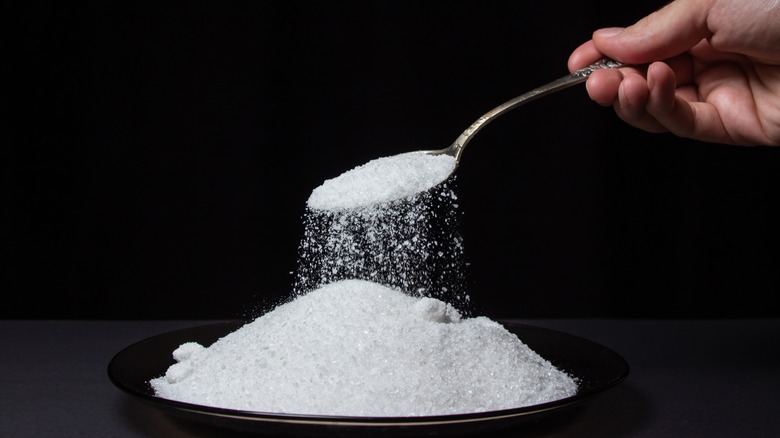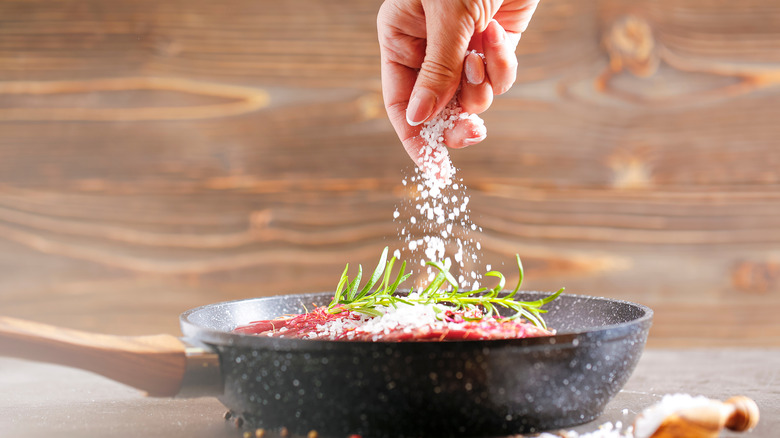The Historic Reason Iodine Is Added To Table Salt
Of all of the spices and seasonings you have in your cupboard, salt is likely the one you reach for most often to season pasta sauce, add to muffin batter, and pat onto raw scallops before cooking. Only a couple of decades ago, there generally were only two options for what kind of salt to use: iodized table salt or table salt that hadn't been iodized. In recent years, the varieties of salt available have greatly increased and include kosher salt, sea salt, Himalayan pink salt, and smoked salts, although table salt is often still the go-to.
Salt plays several important roles in cooking: it enhances flavor and texture, helps bind food, and improves the food's color. Adding iodine to salt is relatively new, especially when taking into consideration that salt in its basic form has been used to preserve food since ancient Egypt, according to History.com. It's only been in the last 100 years that iodine has been added to table salt, according to Food & Wine. But not everyone is a fan of iodized salt in cooking. Wolfgang Puck told MasterClass that he doesn't use iodized salt because he thinks it doesn't have much flavor. If iodine doesn't improve the flavor of salt, in Puck's opinion, what is the point of adding it? The answer lies in the health of the people who consume it.
Health benefits
In the 1920s, iodine began to be added to salt to address thyroid issues and goiters that plagued the population, according to Food & Wine. A goiter, according to the Mayo Clinic, is an irregular growth of the thyroid gland, which is located at the base of the neck.
In fact, goiters were so prevalent among children before the 1920s that an area comprising the Great Lakes, Appalachians, and the Northwest was nicknamed the "goiter belt," per the National Library of Medicine (NCBI). There are only a few foods in which iodine is found in the U.S., including dairy foods, some bread dough, and seafood. Knowing that something needed to be done to address the significant problem, David Cowie, chairman of the Pediatrics Department at the University of Michigan, called upon the U.S. to start adding iodine to salt, per NCBI. It was in Michigan that salt first began to be sold with iodine added to it in 1924. While iodine deficiency has since been greatly reduced in the United States, there are still about 2.2 billion people in the world that live in areas where there is not enough iodine in their diets.
While different salts have places where they are best used, such as sea salt for seasoning meat before cooking, iodized salt has an important role in everyone's health.

